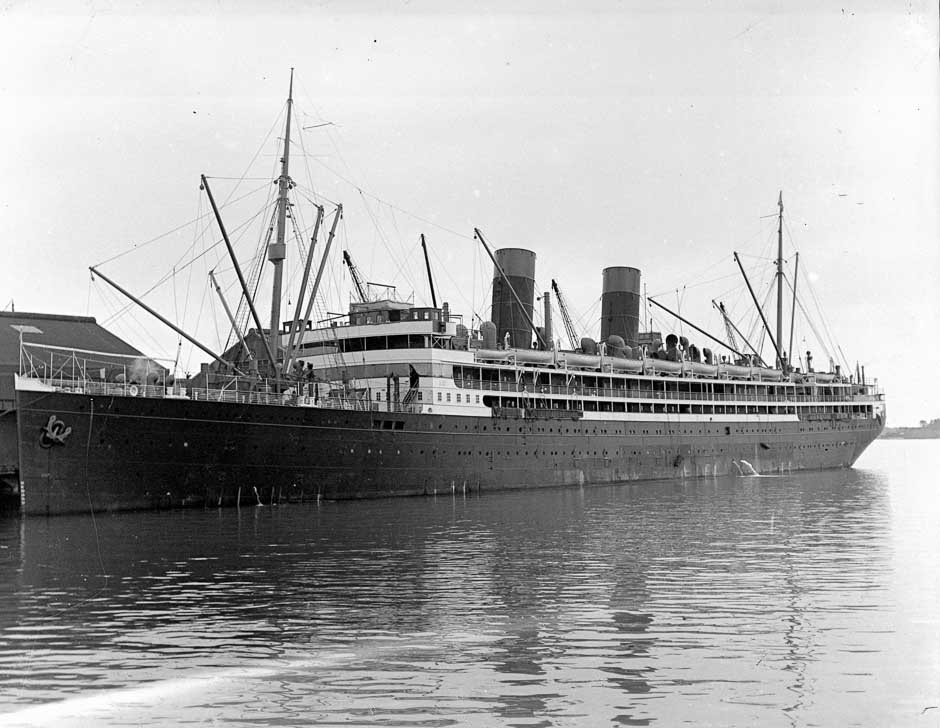
The Union Steam Ship Company's trans-Pacific liner Niagara in Auckland. The famous ship would be sunk by a German mine off Northland in 1940.
Was the Niagara to blame?
Many people believed that the second wave of the 1918 influenza pandemic arrived in New Zealand as ‘a deadly new virus’ on the RMS Niagara. The ship arrived in Auckland with cases of influenza on board a fortnight before the second wave took hold in the city. Speculation was fuelled by rumours that the vessel had been cleared only because two of its passengers, Prime Minister William Massey and his deputy Sir Joseph Ward, had refused to be quarantined. The official Health Department report on the pandemic, compiled by Dr Robert Makgill in 1919, provided evidence that the Niagara carried nothing more than ‘ordinary influenza’. Geoffrey Rice supports Makgill’s argument, concluding that:
A balanced view of the available evidence tends to suggest that the epidemic on the Niagara was a last fling of the mild first wave of the pandemic rather than the first outburst of the deadly second wave. [1]
[1] Geoffrey Rice, Black November: the 1918 influenza pandemic in New Zealand, Canterbury University Press, revised edn, Christchurch, 2005, pp. 198–9.


Community contributions